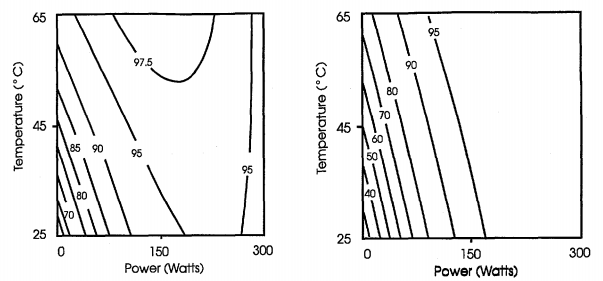The cleaning chemistries which are typically employed throughout integrated circuitfabrication have been in use for many years. Although the various cleaning chemistries areknown to be effective for current generation integrated circuit design rules, the cleaningmechanisms and performance limits of these chemistries are still poorly understood.Through careful process optimization and understanding of cleaning mechanisms, thesechemistries can often be modified to maintain or improve cleaning efficacy while reducingchemical usage.
In recent years, a substantial effort has been focused on optimizing the SC-1 and SC-2chemistries for process performance. It has been shown that these chemistries may besubstantially diluted, while still maintaining high cleaning efficacies. Optimization of theSC-2 clean has been reported elsewhere in the literature [3,4], and hence will not bediscussed here. This paper will discuss the optimization of the SC-1 clean to minimizeparticle and organic contamination, environmental impact, and cost of ownership. DiluteSC1 cleans are effective in removing particles as long as sufficient megasonic power isapplied. This reduces cost of ownership and environmental impact by minimizing chemicalusage, rinse water usage, and waste treatment. Removal of certain light organics iseffective provided that the diluted SC-1 step is used along with other steps as part of anoverall pre-gate cleaning sequence.
To establish boundary conditions for the experimental matrix, the traditional chemicalconcentration of the SC-1 clean (1 part by volume NHOH 1 part by volume HO, 5parts H0) was the upper concentration limit. The dilute cleaning chemistry regime,including the effects of megasonic power and process temperature, was investigated usinga design of experiments approach, The contamination challenge for these experiments wassilicon nitride particles, deposited from an aerosol in a size range from 0.11 mmetrology lower detection limit) to 0.30 um. The wafers for these experiments were 150mm Si<100>, pre-cleaned in a dilute (1:10:130) SC-1 chemistry to establish a constantsurface condition. A Tencor Surfscan 6200 was used for particle metrology before andafter both the particle deposition step and the particle removal clean. A screeningexperiment was first performed to determine the main effects for particle removal. Anempirical response surface matrix was then evaluated to determine optimal conditions forparticle removal.

Fig1
Chemistries used in a cleaning sequence are often selected based on historical precedents.Therefore, careful examination of the chemistries and cleaning sequences may beappropriate. For example, by better understanding the performance limits of SC-1chemistries with respect to particulate and organic contamination removal, significantreductions in chemical usage can be realized..Substantially diluted SC-1 chemistries canstill be highly effective for particle removal, provided sufficient megasonic energy isapplied. Zeta potential interactions, rather than silicon etching, appear to be the dominant factors for particle removal, cleaning chemistries which are concentrated enough toprovide substantial silicon etch rates need not be used for SC-1 particle removal. Thestudy of light organic contamination removal using diluted SC- showed that if the SC-lis used as a stand-alone process, then a reduction in organic cleaning efficacy may beexpected. However, if the SC-1 is used in conjuction with other typical pre-gate oxidationcleaning steps, then the overall cleaning sequence is quite robust, and dilution of the SC-1has no deliterious effect on organic removal, In addition, for the removal of lightorganics omission of the piranha step from pre-gate cleaning sequences may beconsidered as an alternative process sequence. The omission of this process step shouldyield substantial chemical and water savings.These results demonstrate that usingoptimized cleaning sequences can provide effective contamination removal while oftenresulting in reduced chemical and water usage.